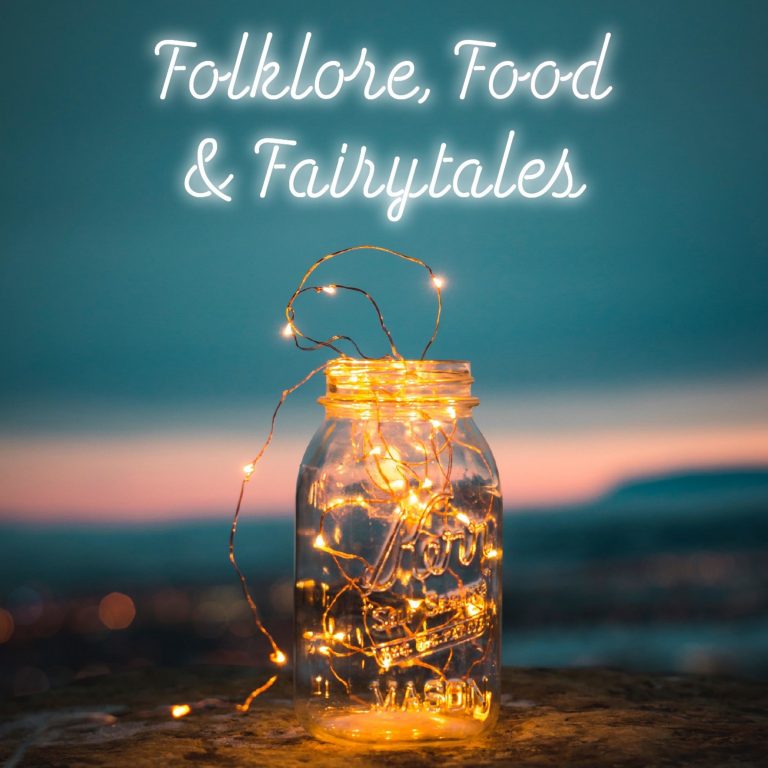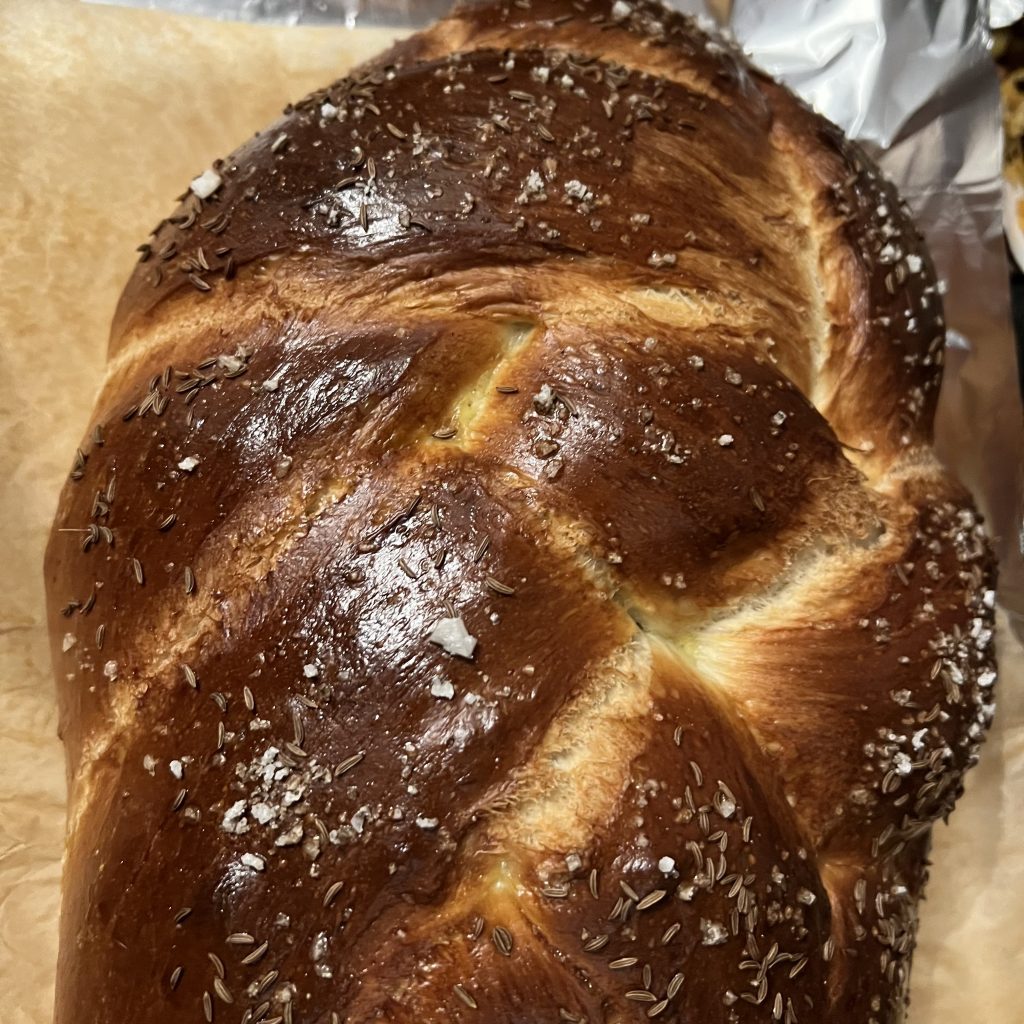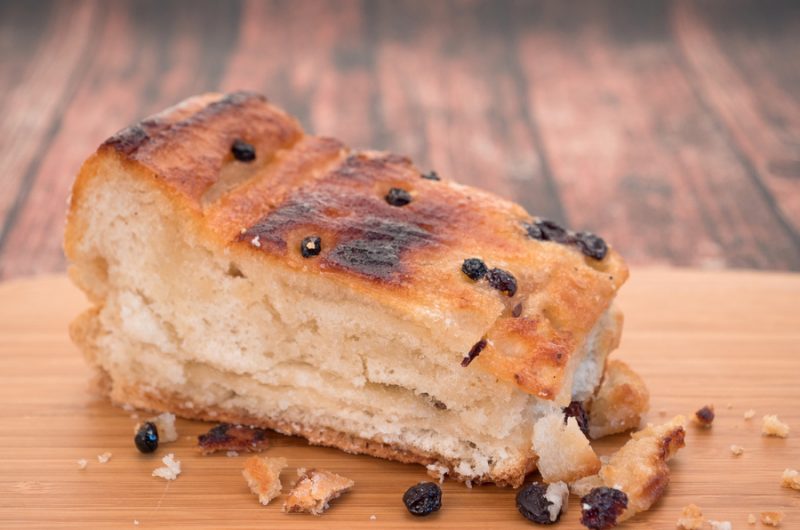In which we discover that the trickster can be tricked, that a good knowledge of crops is essential if you want to best a bogle, that everyone needs a wiffle waffle occasionally and there are few situations in which festival specific bread & cheese doesnt enhance your daily experience.
In which we discover that the trickster can be tricked, that a good knowledge of crops is essential if you want to best a bogle, that everyone needs a wiffle waffle occasionally and there are few situations in which festival specific bread & cheese doesnt enhance your daily experience.
The Tale: The Farmer & The Bogle
The Recipe: Harvest Lardy Cake
If you would like to find more information about any of the stories, books or research mentioned in this episode you can find them in Further Reading.
You can subscribe (or just read) my free newsletter for further snippets of folklore, history, stories, vintage recipes, herblore & the occasional cocktail.
You can also find out more at Hestia’s Kitchen which has all past episodes and the connected recipes on the blog. If you’d like to get in touch about the podcast you can find me on Twitter or Instagram at @FairyTalesFood. If you fancy signing up to my newsletter then you can read my first one and see if you like it.

A Trickster for Every Day
What did you think of our trickster tale? I’m glad Jack was the winner although I will suggest that the bogle didn’t exactly lose out with the turnip greens even though he abandoned them. However, maybe he wasn’t much for eating his greens, not everyone can be the sort of idiot who overeats broccoli until they get stomach ache. I also feel that my life has been enriched by the term wiffle-waffle for resharpening a blade.
I think I might have been more disciplined about sharpening my kitchen knives if I could have scheduled a waffle-waffle into my calendar. You may have noticed that turnips aside, there isn’t actually a food in this story however we are going to look at the bigger picture of food, the harvest and in particular the start of the wheat harvest – Lammas Day in the British Isles, celebrated on 1 August. However, before we head towards the harvest and Lammas and its significance in a pre and post industrial world we really need to talk about the Bogle.
Shhhhh a bogle …..
We should perhaps speak quietly though, you wouldn’t want to attract the attention of a bogle, they can be very destructive, although the ones in Scotland and the border countries appear to only cause problems to those who have committed crimes and will sometimes act on behalf of the innocent. They are considered to be a kind of goblin according to Katharine Brigg’s Encyclopaedia of Fairies and The Vanishing People. They are particularly known for their mischievous tendencies and usually wish to cause some sort of harm for they own entertainment. There are the sort of creatures that tempts a late night traveller off the path and leads them all over until they collapse exhausted with the dawn. That makes our farmer’s victory all the sweeter.
Or Possibly a Boggart ……
There is a lot of crossover of fairy names and tales, there are versions of this story especially in Scandinavia where a troll is the farmer’s opponent and other British versions where a boggart rather than a bogle is involved. A boggart is more normally a brownie who has been embittered by poor treatment and behaves in the same way as a poltergeist. Their tricks sound just annoying, but in a subsistence economy loss of any food or goods due to damage could have resulted in serious consequences. They ere also tricky to get rid of even if you tried to move house they could even move with you as in the well known story ‘We’re Flittin’
The Importance of the Land
The land and the harvesting of it was essential in re-industrial British Isles. A poor harvest could end in starvation or in destitution. Farming was and is very hard, dangerous work and farmers had to be wily and clever to make the very best of every inch of land they farmed. Stupid farmers didn’t thrive. However It was always supposed that the Fair Folk were cleverer than even the cleverest mortals so it is nice to see a mortal trickster with the upper hand for once.
Our farmer is harvesting three crops during this story- turnips in the first year and barley the second and wheat in the third year. Now, if you are anything like me you will have no idea when turnips are normally harvested (or lots of other things actually) Apparently you can sow them for a spring, autumn or late autumn harvest as they don’t enjoy hot weather.
Consider Your Crops
I imagine the farmer sowed them late as he took over the field late and they can be planted after other crops have been harvested. Wheat on the other hand, is normally harvested in August and that brings us to our other topic today Lammas. Lammas, normally celebrated on 1 August, is a celebration of the start of the harvest period which lasts from then until the end of September. It marks the end of the Hay harvest which began at midsummer. It was also one of the days in the year where rents were paid and debts came due and labourers were hired.
There is another festival with a name beginning with L which is often conflated with Lammas, the Irish celebration of Lughnasadh as it also celebrates the first day of harvest. Although both festivals are fully supplied with Ls and Ss the names come from different routes: the Irish festival honouring Lugh the God of Light and Lammas being formed from Old English hlaf, meaning ‘loaf’ and mæsse, meaning ’mass’ or celebration.
Loaf Blessing
This is believed to have come from the blessing of a loaf from the first harvested grain and the ceremonies surrounding it. I’m not an anthropologist so I’m not really qualified to identify whether these are the same festival that has branched out in different directions. I’m also aware that many Pagan and Wiccan communities celebrate these festivals as the same and I would not want to offend or distress someone for whom these celebrations are an important part of their faith.
This is my long winded way of saying that I am going to concentrate on bringing you some of the folklore about Lammas that is based on the historic evidence we have of this day dating back to 9th Century rather than the religious aspects or any possible earlier pre-christian celebrations. This is a special day even if you are not a believer, the first day of harvest is a joyous celebration of hoped for plenty and prosperity.
Rhythms of the Land
Many of us have lost touch with the rhythms of the earth in our post industrial revolution landscapes, and with them, the comfort that can be found in growth, harvest, death and rebirth. The importance of harvests are forcing their way back into the urban bubble though, two of the biggest items in the news this morning being the first ship of grain leaving Ukraine after the Russian invasion which will hopefully help to avoid a food catastrophe and the cooking of some of the berry harvest on the bushes and vines of the UK due to the high temperatures caused by climate change.
Harvest however has never stopped being important and if you have ever spent time in rural locations you can sense that in the almost palpable feeling of potentiality in the air. The feeling of the sun and light on your skin and the smells of freshly harvested grain never really leave you but that’s not to romanticise the experience.
Protection for Workers
Those workers who had to harvest by hand were in for a hard, dangerous time until the eventual celebration at Harvest Home usually in September. They often wore corn knots in their clothes and hats and carried blessed charms to help avoid accidents. This was all ahead on Lammas Eve where workers who had worked the hay harvest were sometimes given an opportunity to capture a sheep who was set loose amongst the returning workers and the person who captured it got to keep it. There are also stories about the devil being abroad on this night to bring bad luck to the future harvest but this may have been a more recent tale.
Harvest Protections
The real star of Lammas was the loaf that was made from the first grain which was blessed as part of the mass at the church on Lammas day or the nearest Sunday. This blessed bread was supposed to be a good omen for the harvest ahead. It had the added benefit that you could use it as part of a charm on your barn to protect the grain after harvest.
This charm was found in a manuscript written in a monastery in the 11th Century and can now be found in the British library (Cotton Vitellius E xviii) . My Latin is very rusty and my anglo Saxon English is non-existent but essentially the bread was broken and placed into 4 corners of the barn whilst a prayer was said which suggested that the barn would now be like Jerusalem where mice did not dwell and so the mice would not eat, gather grain or enjoy the fruits of the harvest. I have to be honest, I’m not sure Google translate was very helpful here but hopefully this was effective.
Food Based Rituals
This was not the only ritual that existed as a celebration and I found several more which you might like to hear about via the journal Folklore:
In Wales “On Lammas Sunday little houses, called ” Lammas Houses,” were set up on “corse.” They were made of sods, reeds, and sticks, and a fire was lighted inside them, and apples roasted, people paying a penny to go in and have a roasted apple”. There is sadly no context but clearly a lot of effort was involved. Apples have a lot of meanings in rural communities so I’ll let you make up your own mind.
In Scotland when the breeding ewes were clipped in the Spring, they were also milked and the milk was reserved to make a cheese, the cheese was then kept until Beltane (1 May). At Beltane, an oatmeal bannock was prepared for each member of the family, egg was whipped and spread over each side and cooked. A slice of the special cheese was placed onto each bannock and the cheese and bannock had to be eaten by each member of the family before Sunset.
The cheese was then preserved until Lammas when it must be eaten before Sunset ‘even although the dogs had to get part of it”. It also notes that no special bannock was made on that day. It may well be because the special break baked that day was being used to protect the harvest. This is complete fabrication on my part but I like the sound of it. I can imagine women refusing to do two special loaves in one day but I may well be doing them a disservice.
The third is a piece from Oxfordshire about a celebration involving ‘Lamb Ale’ made from barley that grew in specific fields of the Parish, eventually the custom died out and the landowner just provided the beer but it does seem a shame as it was also connected with other interesting rituals around Morris dancing and a Whit Hunt (sadly not ceremonial). Eventually even the beer disappeared. This is actually the only historic evidence I could find for a special Lammas ale but I have to admit I didn’t have time to look further once I went down the rabbit hole of this wonderful festival. I can’t imagine a festival that celebrated the grain harvest in a country that is very keen on beer and used it to celebrate everything wouldn’t make use of grain to make beer for this. If you add in the fact that barley usually matures earlier than wheat then I think we can safely imagine that beer would have featured.
Cake or Bread
I’m not going to suggest a specific recipe today as strictly this is going out a day late for Lammas although we are still in Lammas tide. If you want to celebrate and honour our pre-industrial ancestors on this joyous day of our historic agricultural calendar, there are so many excellent bread recipes out there. I have personally made the challah from Ella Risbridger’s wonderful book Midnight Chicken and Other Recipes Worth Living For as part of my personal celebration of the day. I have heard a whisper that if you gloss your loaf with egg white you can write your heart’s desire on the loaf at the same time and the baking might bring it closer.

It might be nice to make a recipe that means something to you to mark the start of a new season but if making bread isn’t your thing then maybe just buy your favourite and just enjoy eating a gift from nature even if its just around a cheese & crisp filling. The grain is still in there in the cheapest white loaf. In fact, as this day is also known as the feast of first fruits you could enjoy toast and jam whilst giving thanks just as well. If you enjoy an alcoholic drink then a fruit or sour beer would be good with that cheese & crisp sandwich. Alternatively you could have lemon barley squash with your jam on toast or maybe even a raspberry cordial with fizzy water. Whatever floats your boat.
If you are desperate for cake though, there is a harvest option from Dorothy Hartley’s Food in England which was meant. It was known as Fourses Cake as that was the time men came in from the harvest. We know it better as Lardy Cake:
Harvest Lardy Cake
8
servings30
minutes30
minutesTaken from Dorothy Hartley’s Food in England – Lardy Cakes from Oxfordshire
These seem to crop up on the borders of the chalk line that runs across England from Wiltshire, through Oxfordshire to Cambridge. The best I ever ate were made by Mrs. Martin’s Susan at Adderbury, near Banbury
Ingredients
See directions below
Directions
- Take some of the dough from the bread. Roll it out a quarter of an inch thick, dot with dabs of cold stiff lard about the size of half walnuts, sprinkle with crystallised sugar, and fold the dough into three, or end to end, pinching the sides together to keep in the air.
- Fold it over once more from the side and roll again—beginning to roll from the open end, so as to imprison the little pockets of air within the dough. Do this three times, putting the dabs of lard between the bubbles showing through where the first dabs were imprisoned.
- The last time strew very lightly (over the sugar and lard) with spice—barely a breath of nutmeg or a suspicion of cinnamon or allspice (spice very delicately indeed, as the lard takes up the aroma strongly).
- Roll out to the size of the baking-tin, marking it across and across for lardy cakes should be broken down their cracks, never cut. Bake in a hot oven.
Further Reading
Encyclopaedia of Fairies – Katharine Briggs
The Vanishing People – Katharine Briggs
The Fairy Mythology – Thomas Keighly
The Book of English Folktales – Sybil Marshall
Some Oxfordshire Seasonal Festivals: With Notes on Morris-Dancing in Oxfordshire : Percy Manning Folklore , Dec., 1897, Vol. 8, No. 4 (Dec., 1897), pp. 307-324
Notes and Queries, The Folk-Lore Journal , Nov., 1884, Vol. 2, No. 11 (Nov., 1884), pp. 348-351
Notes on Beltane Cakes – Walter Gregor, Janet Davidson, Mrs. Robertson, Mrs. Munro, G. Maclean, J. Farquharson and H. Macintosh – Folklore , Mar., 1895, Vol. 6, No. 1 (Mar., 1895), pp. 2-5
Food In England – Dorothy Hartley
Good Things in England – Florence White
Folklore and customs of rural England – Margaret Baker
The Stations of the Sun: A History of the Ritual Year in Britain – Ronald Hutton
Featured Image – The Farmer & The Bogle – Encyclopaedia of Fairies – Katharine Briggs


